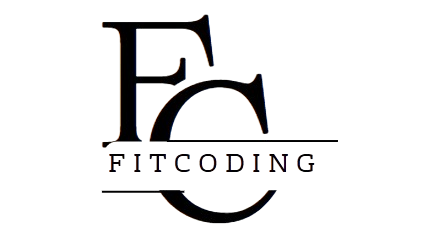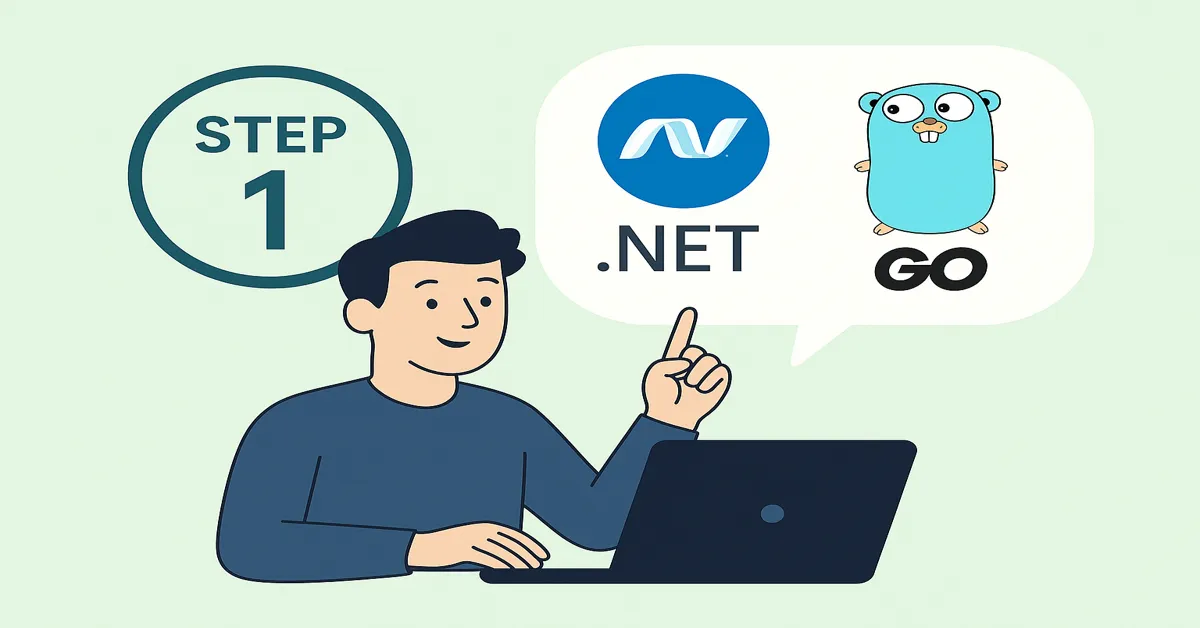In an era where software development drives innovation across every industry, choosing the right programming language—and knowing how to begin learning it—is as crucial as the code itself. Among the most influential technologies shaping today’s backend systems, cloud infrastructure, and enterprise software are .NET and Golang. Although markedly different in syntax, philosophy, and ecosystem, both have emerged as powerful tools for modern developers – Learn .NET & Golang Programming.
This article offers a deep, foundational guide to taking the first step in learning both .NET and Golang programming languages. Not a side-by-side comparison, this is a step-by-step initiation into each language, built to help absolute beginners understand what to learn, why it matters, and how to build a sustainable learning path – Learn .NET & Golang Programming.
Why .NET and Golang?
Before jumping into the technical steps, it’s vital to understand why these two platforms are relevant in today’s programming landscape.
- .NET, a cross-platform, open-source development platform by Microsoft, empowers developers to build applications for web, mobile, desktop, cloud, and even gaming. With a mature ecosystem and powerful tools, it is widely used in enterprise environments.
- Golang (or Go), designed at Google, is known for its simplicity, speed, and concurrency model. It powers systems at companies like Docker, Uber, and Cloudflare. It is particularly beloved for microservices and backend systems.
Both platforms are worth your time, but learning them effectively begins with a well-grounded first step.
Part 1: Step 1 to Learn .NET Programming
Understand What .NET Is
To begin learning .NET, you must first understand that it’s not a language—it’s a platform. You can write .NET applications in multiple languages, but the most popular one, by far, is C# – Learn .NET & Golang Programming.
The .NET ecosystem includes:
- .NET SDK (Software Development Kit)
- Visual Studio / Visual Studio Code
- NuGet Package Manager
- ASP.NET Core for web apps
- Entity Framework for database access
Before writing a line of code, get familiar with what you’re diving into.
Step 1A: Set Up Your Environment
The first actionable step is to install the necessary tools:
- Install .NET SDK – Visit the official .NET site and install the latest SDK version.
- Install Visual Studio or VS Code – Visual Studio offers deep integration for .NET, while VS Code is lighter and cross-platform.
- Command Line Tools – Familiarize yourself with the terminal or PowerShell. .NET CLI tools (
dotnet new,dotnet build,dotnet run) are powerful and necessary.
This setup allows you to build and run C# applications locally.
Step 1B: Write Your First C# Console App
Start with a simple “Hello, World!” program. In Visual Studio Code:
dotnet new console -n HelloWorldApp
cd HelloWorldApp
dotnet runThis scaffolds a new console app and runs it.
The output:
Console.WriteLine("Hello, World!");This moment is important: you’ve written, built, and run your first .NET application. This foundational confidence sets the tone for everything else.
Step 1C: Learn the Language Basics
Focus on the C# language fundamentals:
- Data types (int, string, bool)
- Control structures (if, for, while)
- Methods and classes
- Properties and access modifiers
For example:
class Program {
static void Main(string[] args) {
Console.WriteLine("Enter your name:");
string name = Console.ReadLine();
Console.WriteLine($"Hello, {name}!");
}
}Learning these basics through mini-projects or exercises is more effective than theory alone.
Step 1D: Understand Project Structure
A .NET project is structured around .csproj files, namespaces, and class hierarchies. Understanding this structure is crucial for navigating real-world codebases.
Step 1E: Learn with Purpose
Pick one beginner goal:
- Build a simple calculator
- Create a contact list with file I/O
- Develop a REST API with ASP.NET Core
Learning accelerates when there’s a goal. Even a small, functional app teaches more than hours of video tutorials.
Part 2: Step 1 to Learn Golang Programming
Understand What Go Is
Go is a language and platform in one. It is statically typed, compiled, and designed for clarity and performance. Unlike .NET, Go doesn’t require a heavyweight IDE or runtime—just a text editor and the Go toolchain.
Key features of Go:
- Minimal syntax
- Fast compilation
- Native concurrency via goroutines
- Simple packaging and deployment
Step 1A: Set Up Your Environment
- Install Go – Download from golang.org and install it for your operating system.
- Set up GOPATH and workspace – Although Go modules reduce the need for this, understanding your workspace is still valuable.
- Install a code editor – VS Code with the Go extension works well.
Ensure you can run go version and go run from the terminal.
Step 1B: Your First Go Program
Create a file called main.go:
package main
import "fmt"
func main() {
fmt.Println("Hello, World!")
}Run it:
go run main.goYou’ve just compiled and executed a Go program. Notice how fast it is—Go is efficient by design.
Step 1C: Learn the Language Basics
Focus on core Go features:
- Declaring variables
- Defining functions
- Understanding slices and maps
- Using conditionals and loops
Example:
package main
import "fmt"
func add(a int, b int) int {
return a + b
}
func main() {
result := add(3, 4)
fmt.Println("Sum:", result)
}Go enforces good practices—like error handling and formatting—early in the learning process.
Step 1D: Understand the Go Philosophy
Go does not include exceptions, inheritance, or implicit type conversions. It was designed to be simple, maintainable, and readable. Embrace that simplicity.
Step 1E: Learn by Building
Choose one basic project:
- CLI To-Do app
- File parser
- Simple HTTP server using
net/http
Hands-on work is how you learn Go’s philosophy: composition over inheritance, simplicity over complexity.
Tips for Learning Both .NET and Go Effectively
1. Start With a Project
Don’t get stuck in tutorial loops. Build something meaningful, no matter how small.
2. Practice Daily
Consistency beats intensity. Even 30 minutes a day compounds quickly.
3. Read Code
Browse open-source repositories. See how professionals structure their code.
4. Understand Errors
Don’t avoid error messages. Learn to read and interpret them—they are guides.
5. Join Communities
Subreddits, Discord groups, and GitHub discussions are goldmines for learning.
6. Avoid Paralysis
You don’t need to master both languages at once. Start with one, then layer the second.
Realistic Learning Path: First 30 Days
Week 1:
- Set up environments for both platforms
- Write basic console apps
- Learn data types and control flow
Week 2:
- Explore file I/O and functions
- Start using Git for version control
Week 3:
- Create a basic REST API (in either .NET or Go)
- Read documentation and API references
Week 4:
- Build something small but useful
- Reflect on what felt natural in each language
Should You Learn Both at the Same Time?
This depends on your goals. If you’re exploring backend development broadly, comparing .NET and Go side-by-side can be illuminating. However, if you’re aiming for job readiness or depth, choose one and master it before branching out.
.NET is more feature-rich and suited for enterprise applications. Go is lightweight and shines in systems programming and microservices. Both have a future, but their paths differ.
Final Thoughts
The first step in learning any technology is not writing code—it’s developing a mindset of exploration. Both .NET and Go reward different learning styles: one encourages structure and abstraction, the other demands clarity and directness – Learn .NET & Golang Programming.
Don’t rush. Don’t copy and paste code you don’t understand. Ask why. Break things. Fix them. Iterate.
Starting today, you’re not just learning syntax. You’re learning how to think like a developer.
And that is the most powerful step of all.
Read: Difference Between .NET & Golang Programming Languages
FAQs
1. Should I learn .NET or Golang first as a beginner?
It depends on your goals. If you’re aiming for enterprise software development or full-stack web apps, start with .NET. If you’re more interested in building microservices, system tools, or lightweight APIs with high performance, Go is a great first choice. Both are beginner-friendly in their own ways.
2. Do I need prior programming experience to start learning .NET or Go?
No, both .NET (using C#) and Go can be learned from scratch. C# offers more structure and abstraction, which some beginners find helpful. Go’s simplicity and minimalism make it easy to pick up without a background in other languages.
3. What tools do I need to start coding in .NET and Go?
For .NET: Install the .NET SDK and either Visual Studio or Visual Studio Code. For Go: Install the Go toolchain and use a code editor like VS Code. Both platforms offer command-line tools to build and run projects.
4. Can I learn both .NET and Golang at the same time?
Yes, but it’s best suited for those who already have some programming experience. Beginners should consider starting with one language to build foundational skills, then expand to the other to compare paradigms and deepen understanding.
5. How long does it take to become proficient in .NET or Go?
With consistent practice (1–2 hours daily), you can build basic proficiency in either language within 1–2 months. Mastery—especially of frameworks like ASP.NET Core or Go’s concurrency model—takes longer and depends on project complexity and learning consistency.











